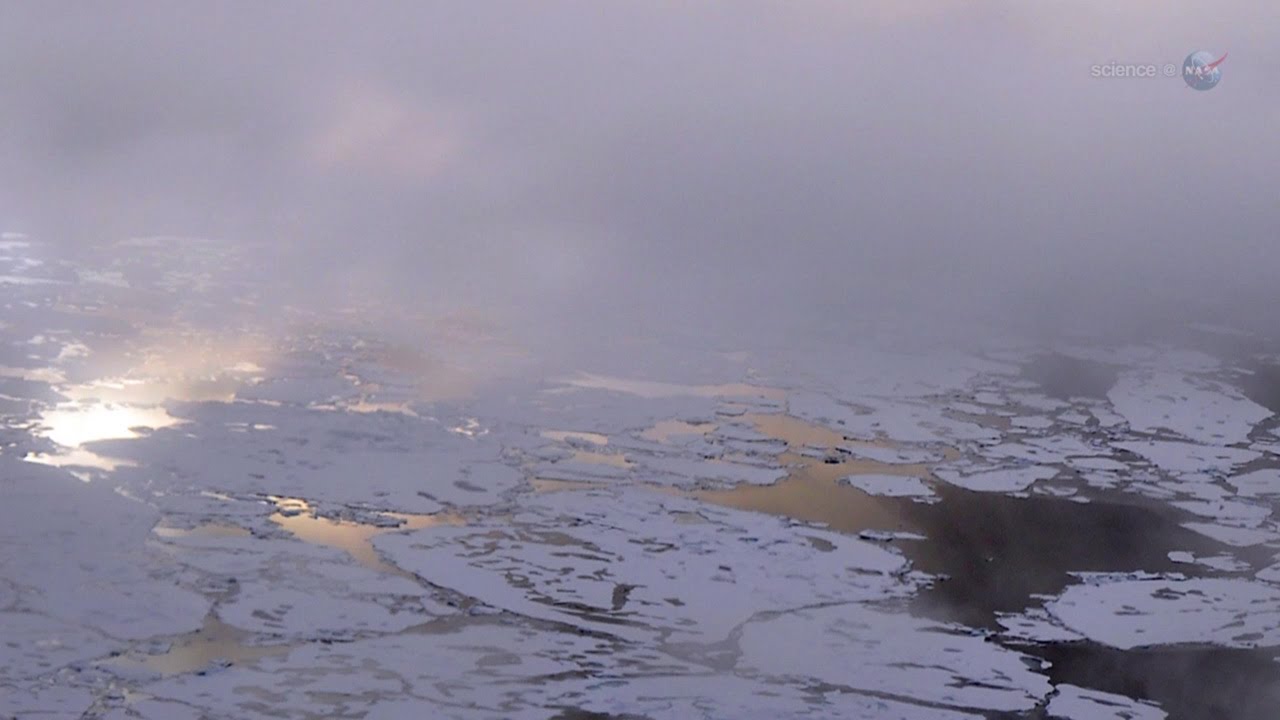ScienceCasts: The Cloudy Future of Arctic Sea Ice
As climate change continues to hammer Arctic sea ice, pushing […]
As climate change continues to hammer Arctic sea ice, pushing back its summertime boundaries to record-high latitudes, NASA is flying an innovative airborne mission to find out how these developments will affect worldwide weather.
NASA: Oct 15, 2014: Climate change is a global phenomenon, yet Earth scientists are keeping a wary eye on one place in particular–the Arctic.
“Polar regions are important for us to study right now,” explains Tom Wagner of NASA’s Earth Science Division in Washington DC. “They are changing rapidly.”
One of the most visible of signs of warming is the retreat of Arctic sea ice. Every year, sea ice waxes and wanes in a normal response to the changing of seasons; the annual sea ice minimum occurs near the end of northern summer. Since the 1970s, researchers carefully watched to see if the rhythm of Arctic sea ice would respond to global warming.
At first there was little systematic change. Then came the 2000s.
“We started to see dramatic changes around 2005,” recalls Walt Meier of NASA Goddard. “In 2007 the bottom seemed to fall out.” By the end of that year’s melt season, the Arctic Ocean had lost a chunk of ice cover equivalent to the combined size of Alaska and Texas. “There was a lot of shock in the sea ice community. I don’t remember anyone thinking it could get that low that quickly,” Meier says.
What had been missing from most analyses, which focused on the shrinking area of sea ice, was the fact that the ice had also thinned over the past decades, making it much more vulnerable to weather and warming.
Since 2007, sea ice has continued to decline, on average, with annual ups and downs. The current minimum in Sept. 2014 is slightly lower than 2013’s, making it the sixth lowest in the satellite record. At one point a small area of the Laptev Sea ice edge was only five degrees of the North Pole.
“Every day we are learning more about the implication these changes have for the rest of the planet,” continues Wagner. “Change in Arctic sea ice is probably influencing our weather.”
To investigate that possibility, NASA is flying an airborne mission over the Arctic Ocean. Its name is ARISE, short for “Arctic Radiation-IceBridge Sea and Ice Experiment.”
Bill Smith, the project’s Principal Investigator from the Langley Research Center, explains the mission’s goals: “We have reason to believe that loss of sea ice creates more clouds. Basically, we want to find out if that’s true and to determine the impacts.”
Ice reflects sunlight back to space. If the ice melts, that sunlight is no longer reflected; it is absorbed. Moisture released from the warming sea surface rises up to form clouds. Clouds themselves reflect sunlight, but they also act like a blanket, keeping the earth beneath them warm.
The interplay between clouds and ice, cooling and warming, is complex. ARISE aims to unravel the knot by taking a lot of data:
“Our C-130 is instrumented with a unique complement of sensors,” says Smith. “We have radiometers pointed up and down to measure incoming and outgoing sunlight; an infrared thermometer to measure the temperature of the sea surface, a laser altimeter to measure the height (and thus the thickness) of the ice; and more.”
Earth-orbiting satellites regularly make measurements of the Arctic, but the region is big and complex, so the data can be difficult to interpret. By comparing C-130 measurements with satellite data taken at the same time, Smith and colleagues hope to add some “ground truth” to the problem.
“We need more information to understand how to interpret satellite measurements, and an aircraft can help with that,” he says.
If climate change continues apace, future summers could bring an ice-free Arctic Ocean. ARISE could tell us some of the implications … before that happens.
Credits:
Author: Dr. Tony Phillips | Production editor: Dr. Tony Phillips | Credit: Science@NASA
